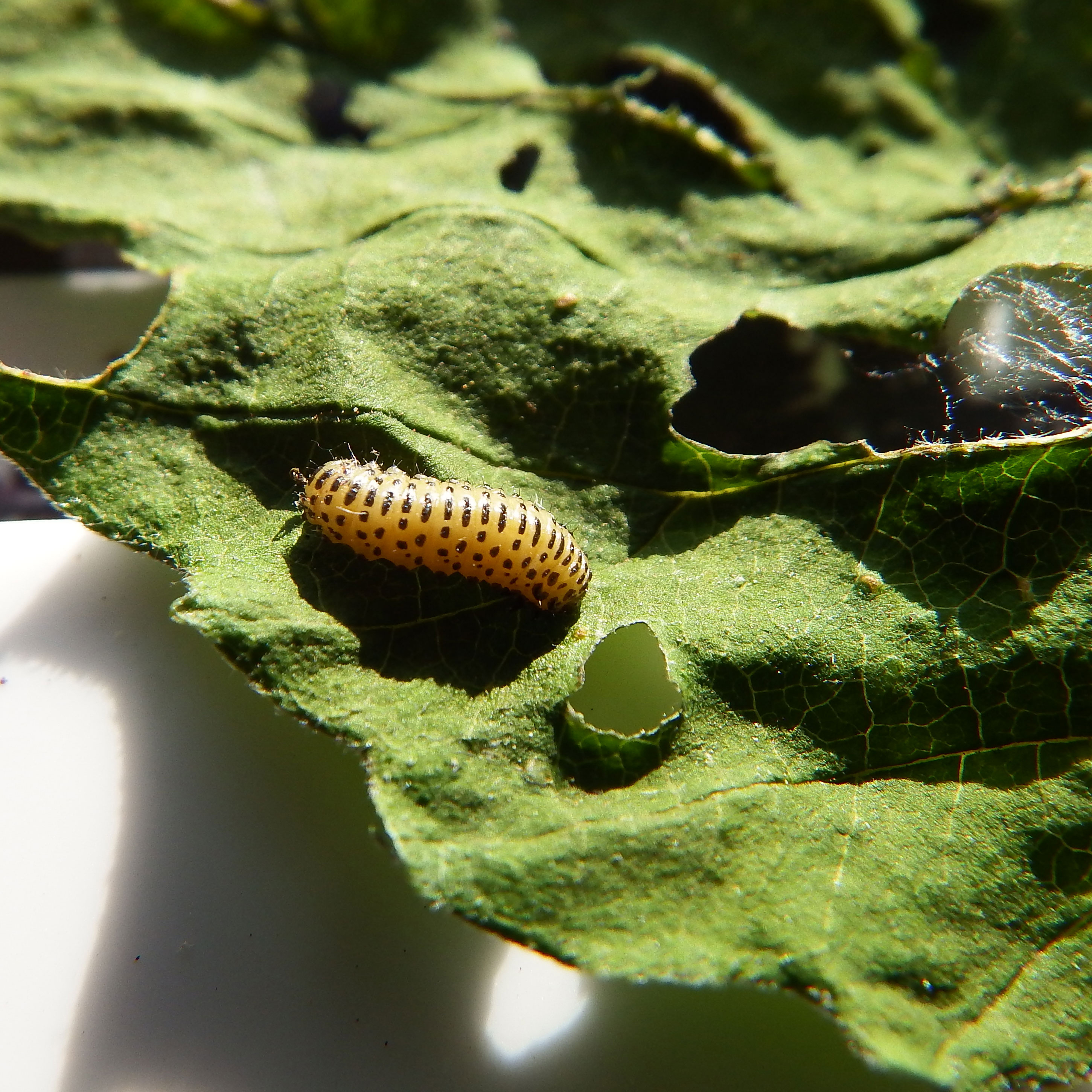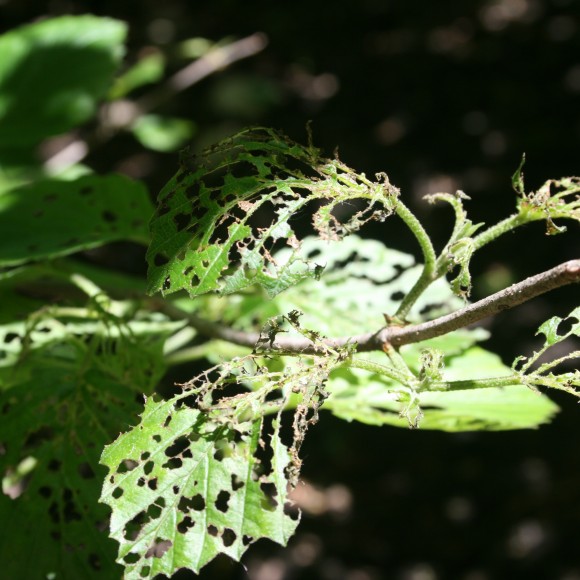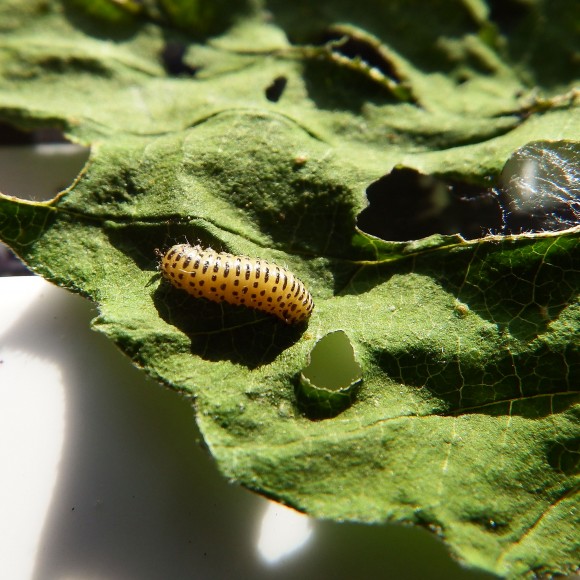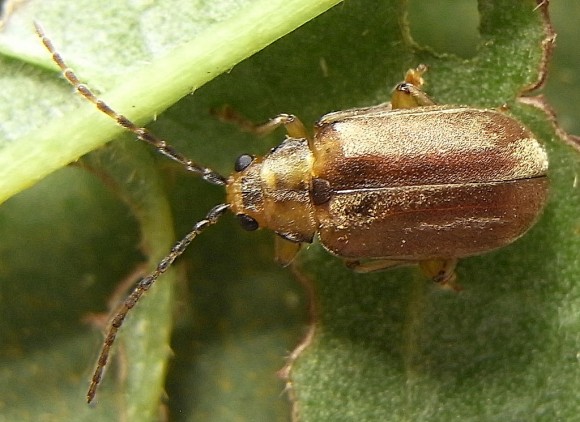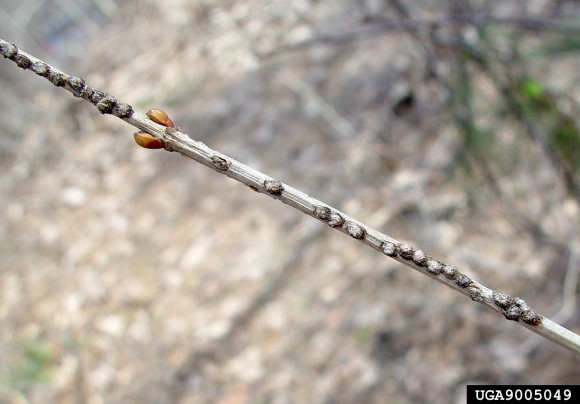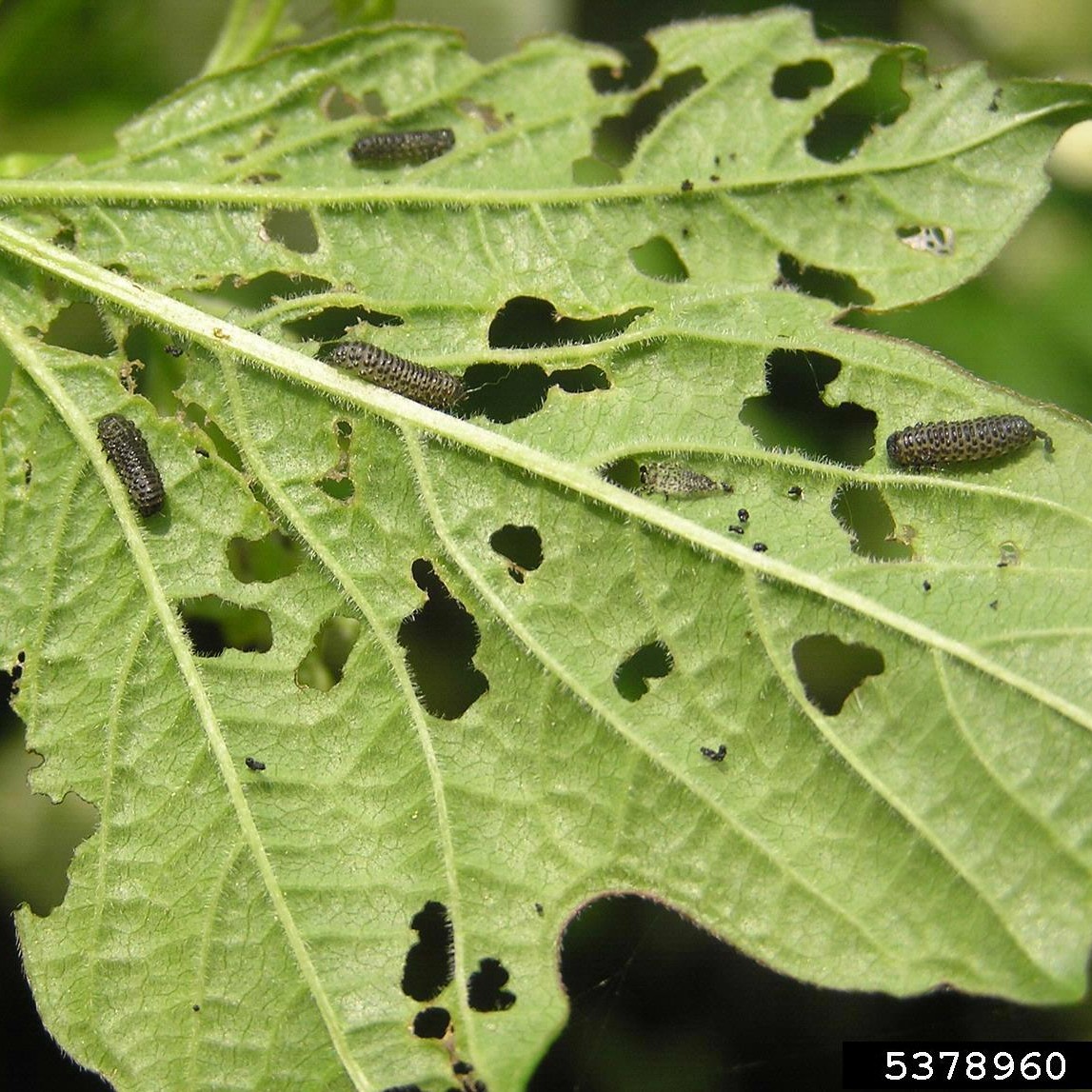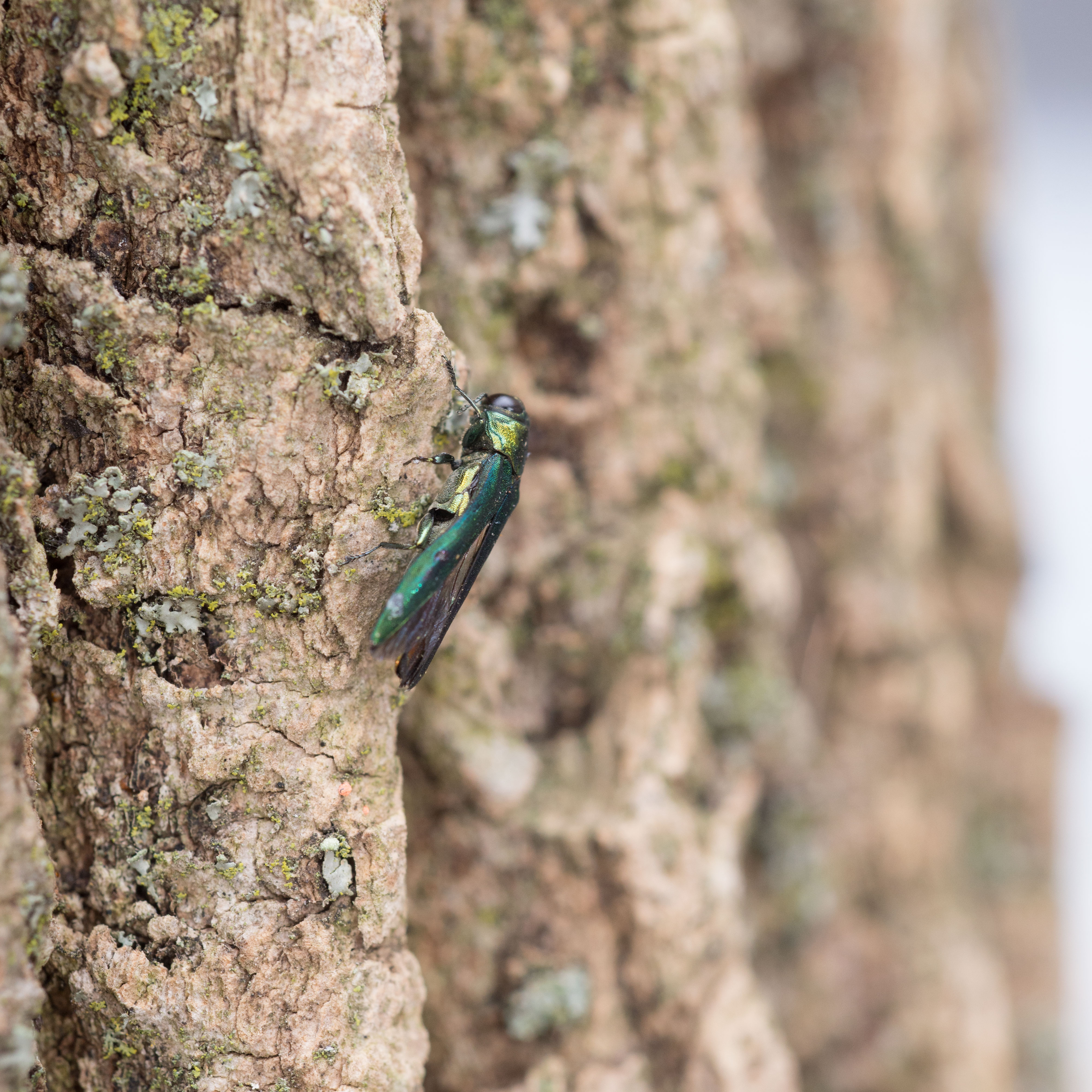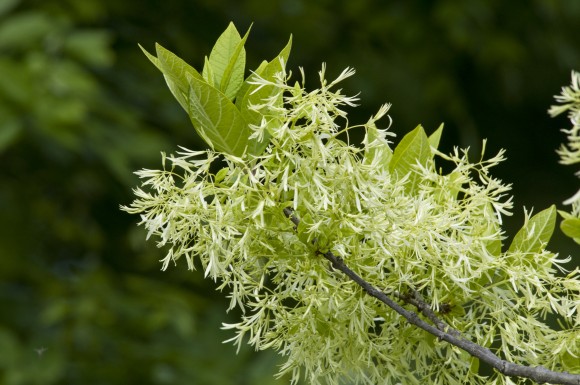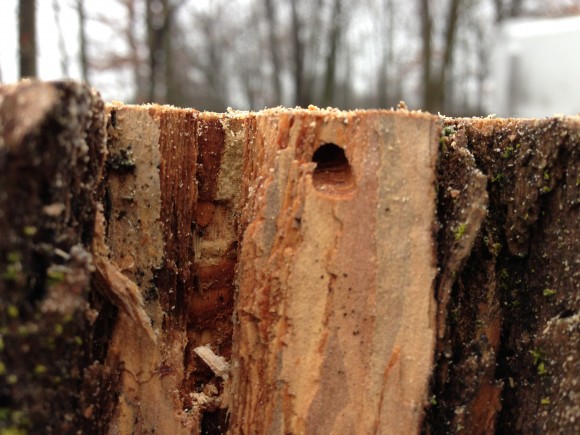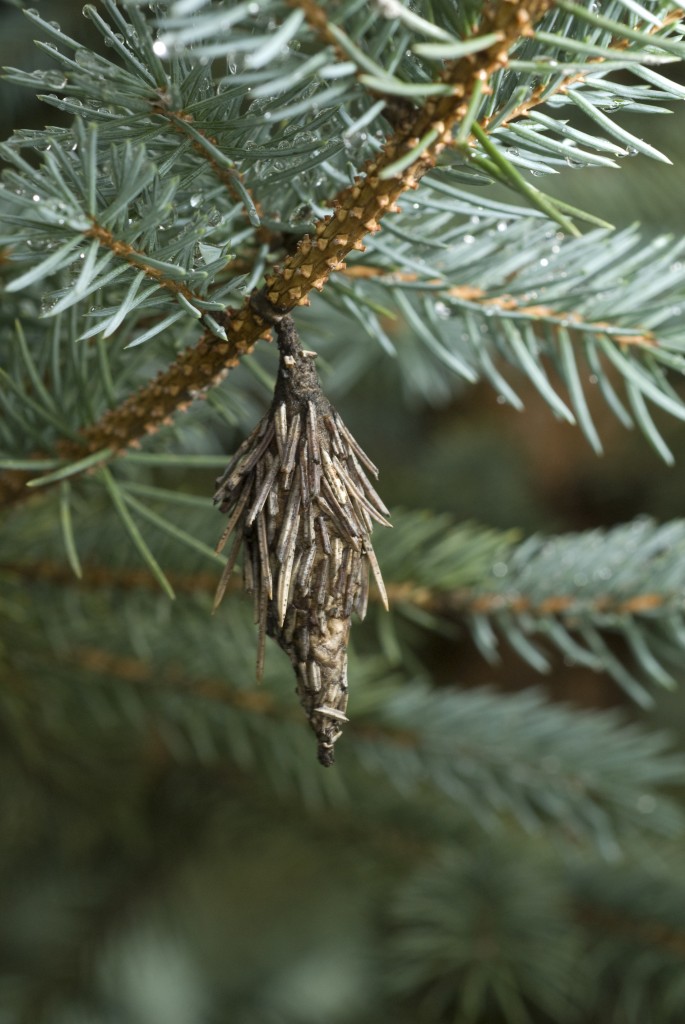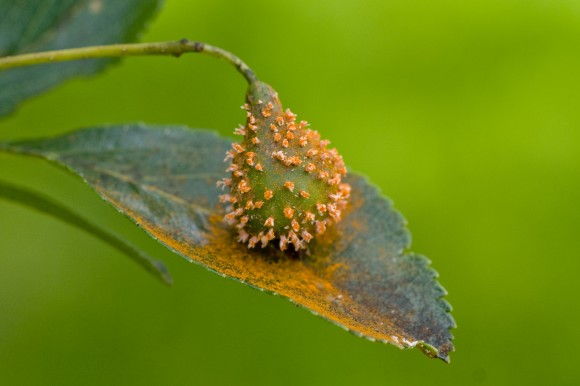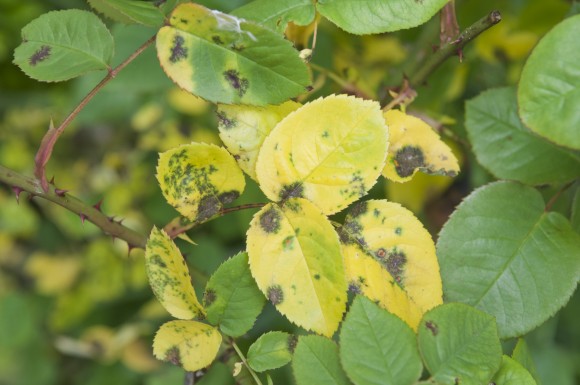Unwanted wiggler discovered!
About a month ago, one of our horticulturists called me out to look at a groundcover planting that was being heavily disturbed by worms. At first look, I thought nothing of it—maybe it was increased surface worm activity from all the rain. A couple of weeks later, they were still very active, and the groundcover was actually floating on worm castings! We rolled it up to expose many worms. When I picked up a worm, it flipped out of my hand and wriggled away quickly, snake-like—not like a typical worm.
Since this activity seemed strange, I asked our senior ecologist to have a look at the crazy-acting worms. Coincidentally, he identified them as “crazy worms” (Amynthas agrestis), an invasive worm on his watch-for list that has never been found in Illinois. Samples were sent to the University of Illinois for confirmation, and the Illinois Department of Agriculture and Illinois Department of Natural Resources were informed. Our find has been confirmed—along with another find in DuPage County—and a potential find in Wilmette is being investigated. The crazy worm has been in the United States for many years in many of the southeastern states (and in the Smoky Mountains). In 2013, it was found in Wisconsin. DuPage and our find are the first confirmed for Illinois.
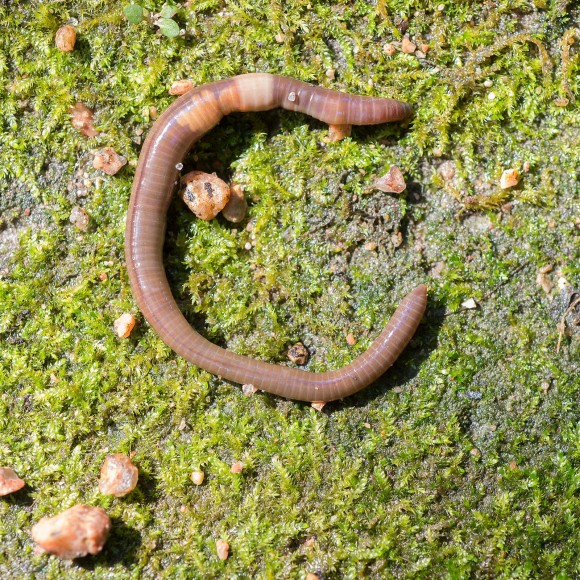
Why is this worm bad?
- They out-compete and push out our common European earthworms.
- They multiply very quickly.
- They devour soil organic matter and drastically change soil structure. This has a huge impact on forest ecosystems as well as on residential and urban ornamental plantings.
How do I identify the crazy worm?
- They are found near the soil surface.
- When touched, they respond immediately with a crazy flipping and jumping reaction.
- They have a fast, snake-like movement.
- Unlike a common European worm, they have a milky white flat band (clitellum).
- They are 4 to 8 inches long.
- A worm may lose its tail when handled.
What should I do if I think I have found the crazy worm?
- Report the find to the Illinois Department of Natural Resources or Illinois Department of Agriculture.
- To learn more about the crazy worm, just do a Google search on Amynthas agrestis (crazy worm or jumping worm).
Currently there are no treatments recommended for management of the crazy worm. Education and slowing the spread is the current course of action. The crazy worm’s primary means of spread is through the movement of plants with soil.
The Garden is a member of the Sentinel Plant Network, a group that unites botanic gardens in monitoring and providing education on exotic, invasive plant pests and pathogens, and works in partnership with the National Plant Diagnostic Network (NPDN).
If you are a plant and bug person like me, please consider becoming a NPDN First Detector and help be on the lookout for these exotic, invasive plant pests and pathogens. The NPDN offers an online training course to become a First Detector at firstdetector.org. It’s free, and upon completion, you even get a printable certificate!
©2015 Chicago Botanic Garden and my.chicagobotanic.org


